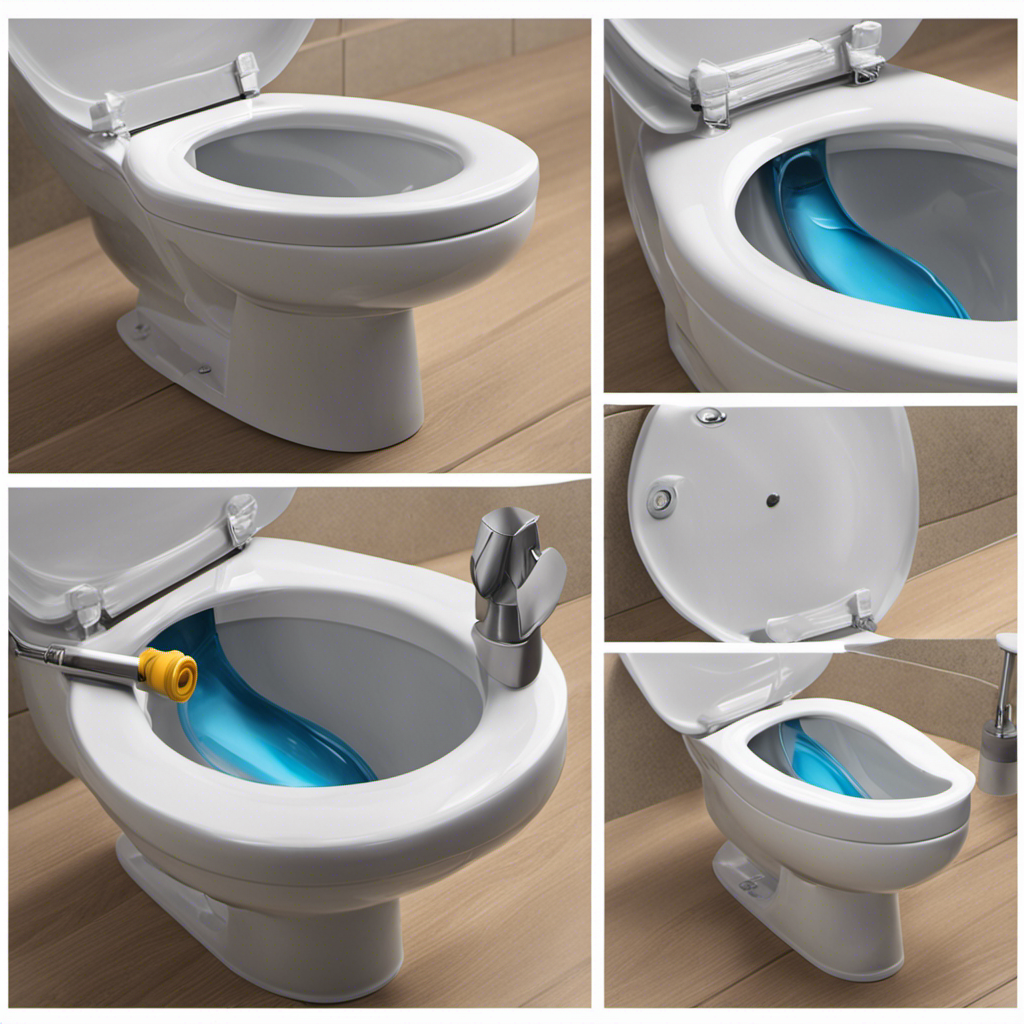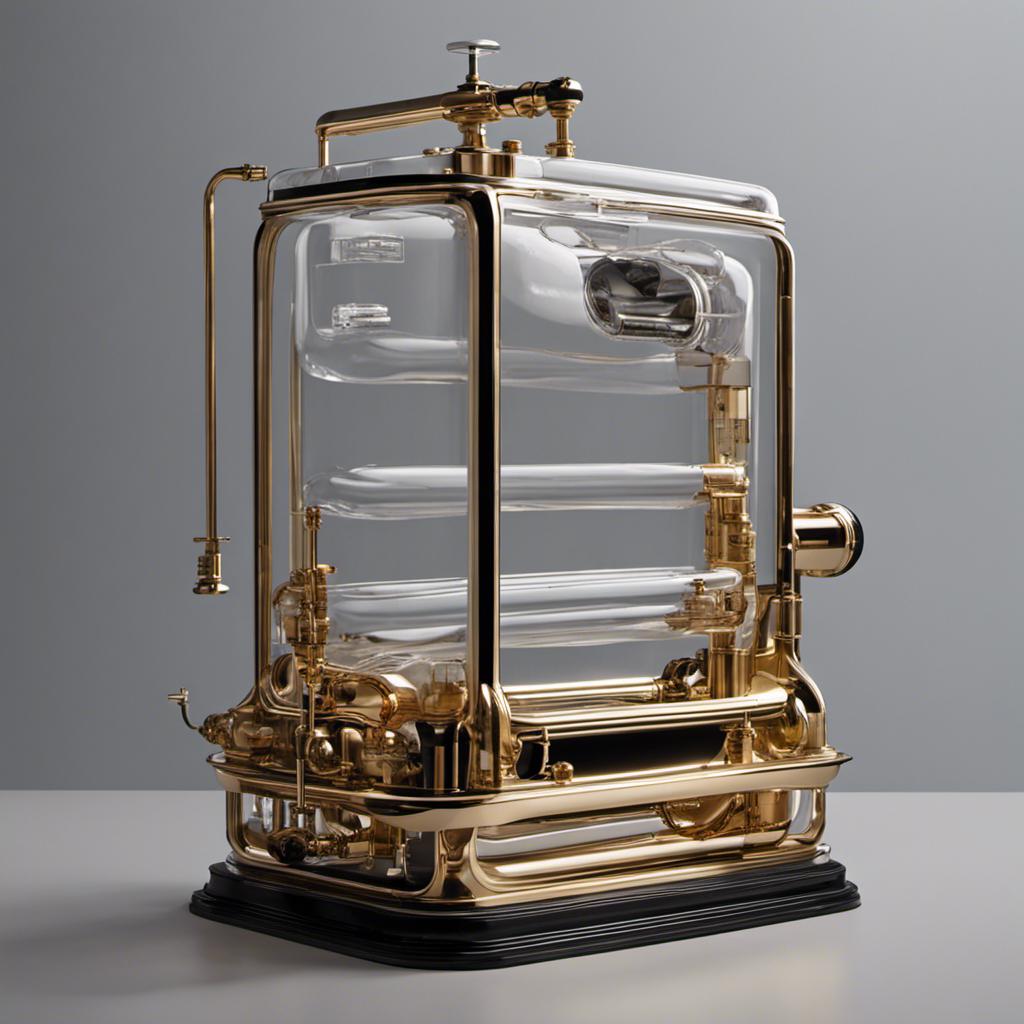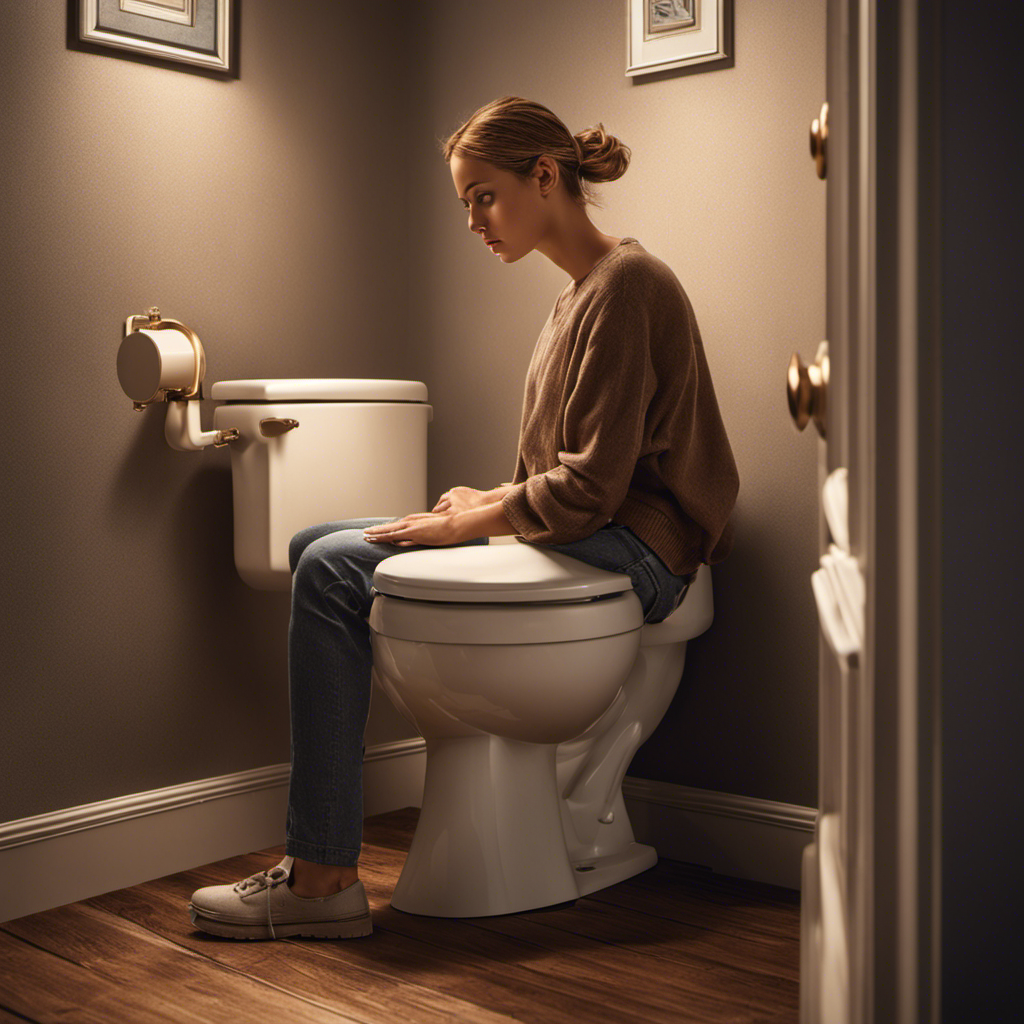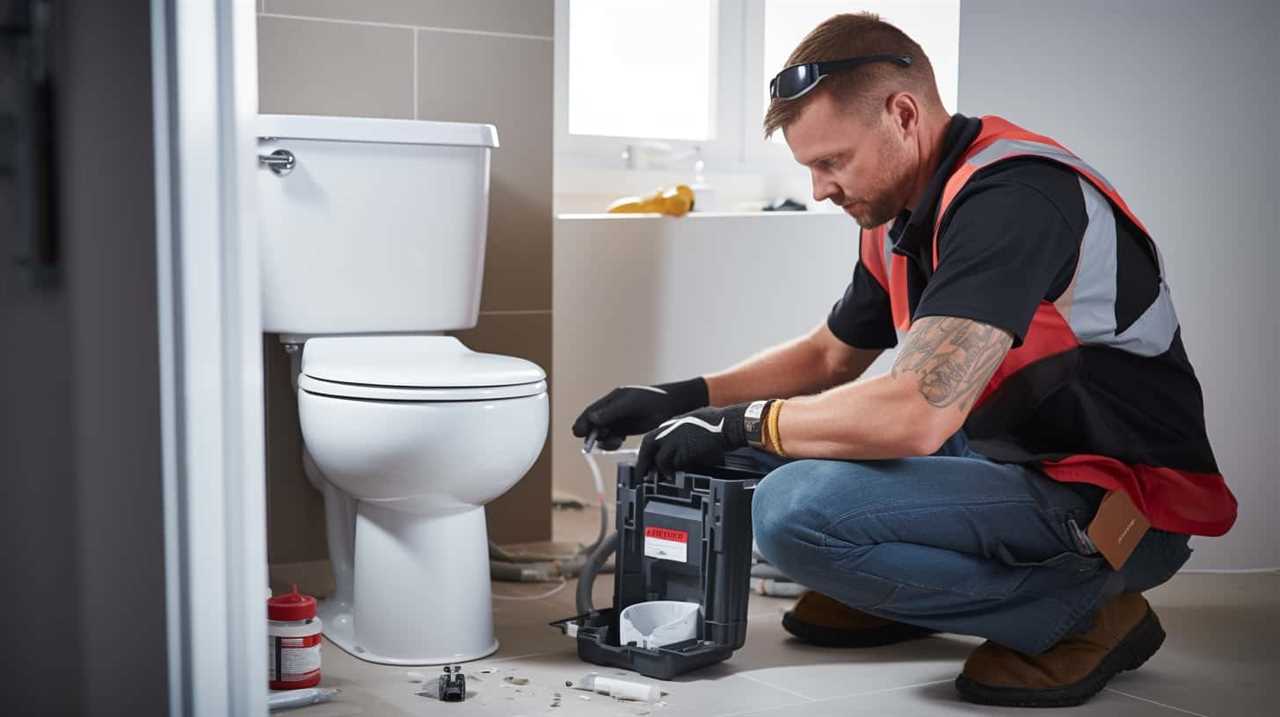I’ve always believed that the key to a well-functioning toilet is maintaining the perfect water level in the bowl. It may seem like a small detail, but trust me, it makes a world of difference.
In this article, I’ll guide you through the process of adjusting the toilet bowl water level, ensuring optimal performance and efficiency. By understanding the mechanism, following a few simple steps, and troubleshooting any issues that may arise, you’ll be able to take control of your toilet’s water level like a pro.
Let’s dive in!
Key Takeaways
- Proper water level is crucial for effective flushing and preventing clogs.
- Low water level can lead to plumbing issues and inadequate waste removal.
- High water level can result in constant water flow and wastage.
- Understanding and adjusting the fill valve is essential for maintaining the right water level.
Understanding the Toilet Bowl Water Level
To understand the toilet bowl water level, you’ll need to locate the fill valve. The proper water level in the toilet bowl is crucial for its functionality and efficiency.
If the water level is too low, it may not effectively flush waste, leading to clogs and other plumbing issues. Conversely, if the water level is too high, it can result in constant water flow and wastage.
Several factors can affect the toilet bowl water level, such as the fill valve adjustment, water pressure, and the condition of the flapper valve.
The fill valve regulates the water flow into the toilet tank, and adjusting it can help achieve the desired water level. Additionally, water pressure variations in the supply line can also impact the water level in the toilet bowl.
Therefore, it is essential to understand these factors to maintain a proper water level in the toilet bowl.
Identifying the Water Level Adjustment Mechanism
Take a look inside the tank and locate the mechanism that controls the amount of water in your toilet. This mechanism is called the fill valve. It is responsible for regulating the water level in the tank and ultimately in the toilet bowl.
The fill valve consists of a float, which rises and falls with the water level, and a valve that opens and closes to allow water in. To adjust the water level, you can simply adjust the float. Most fill valves have a screw or a clip that allows you to raise or lower the float. By raising the float, you can increase the water level, and by lowering it, you can decrease the water level.
Common problems with the water level adjustment mechanism include a float that is too high or too low, resulting in either a constantly running toilet or a weak flush.
Steps to Lower the Toilet Bowl Water Level
By simply lowering the float in the tank, you can decrease the amount of water in the toilet bowl. Here are the steps to lower the toilet bowl water level:
-
Locate the water level adjustment screw: Look for a small screw on top of the fill valve or near the float. This screw controls the water level in the tank.
-
Turn off the water supply: Locate the shut-off valve behind or near the toilet and turn it clockwise to stop the water flow.
-
Adjust the water level: Use a screwdriver to turn the adjustment screw counterclockwise. This will lower the float and decrease the water level in the tank.
-
Test and make adjustments: Turn the water supply back on and observe the water level in the toilet bowl. If it’s still too high, repeat step 3 until you achieve the desired water level.
Regularly adjusting and maintaining the water level in your toilet bowl can help prevent overflow and ensure proper flushing.
Steps to Raise the Toilet Bowl Water Level
If you want to increase the water level in the toilet bowl, start by locating the refill valve. This valve is usually located on the left-hand side of the toilet tank.
Once you have located the refill valve, turn it clockwise to increase the water level. You may need to adjust it incrementally until you reach the desired water level.
It is important to note that increasing the water level in the toilet bowl may lead to higher water consumption, which goes against water conservation strategies. Therefore, it is recommended to adjust the water level only if necessary for proper toilet bowl maintenance.
Remember to regularly check for any leaks or malfunctions in the toilet system to ensure optimal water usage and conservation.
Troubleshooting Common Issues With Toilet Bowl Water Level Adjustment
To troubleshoot common issues with adjusting the water level in your toilet bowl, start by checking for any leaks or malfunctions in the refill valve or toilet system. Here are four steps to help you troubleshoot and fix any problems with your toilet bowl water level:
-
Inspect the refill valve: Check for any leaks or blockages in the refill valve. If there’s a leak, tighten or replace the valve as necessary. If there’s a blockage, clear it using a wire or plunger.
-
Check the float mechanism: Make sure the float isn’t stuck or obstructed, preventing it from rising and shutting off the water flow. Adjust the float arm if needed.
-
Examine the water supply line: Inspect the line for kinks, leaks, or blockages. Straighten any kinks, fix leaks, and clear blockages.
-
Clean the toilet bowl: If you’re still having issues, there may be a clog. Use a plunger or toilet auger to clear any obstructions in the bowl.
Conclusion
In conclusion, adjusting the toilet bowl water level is like finding the right balance between a gentle rain and a powerful waterfall. By understanding the mechanism and following the precise steps, you can easily raise or lower the water level to your liking.
However, if you encounter any issues along the way, don’t worry! Troubleshooting common problems is like navigating through a maze, but with our technical guidance, you’ll find your way to a perfectly adjusted toilet bowl in no time.










